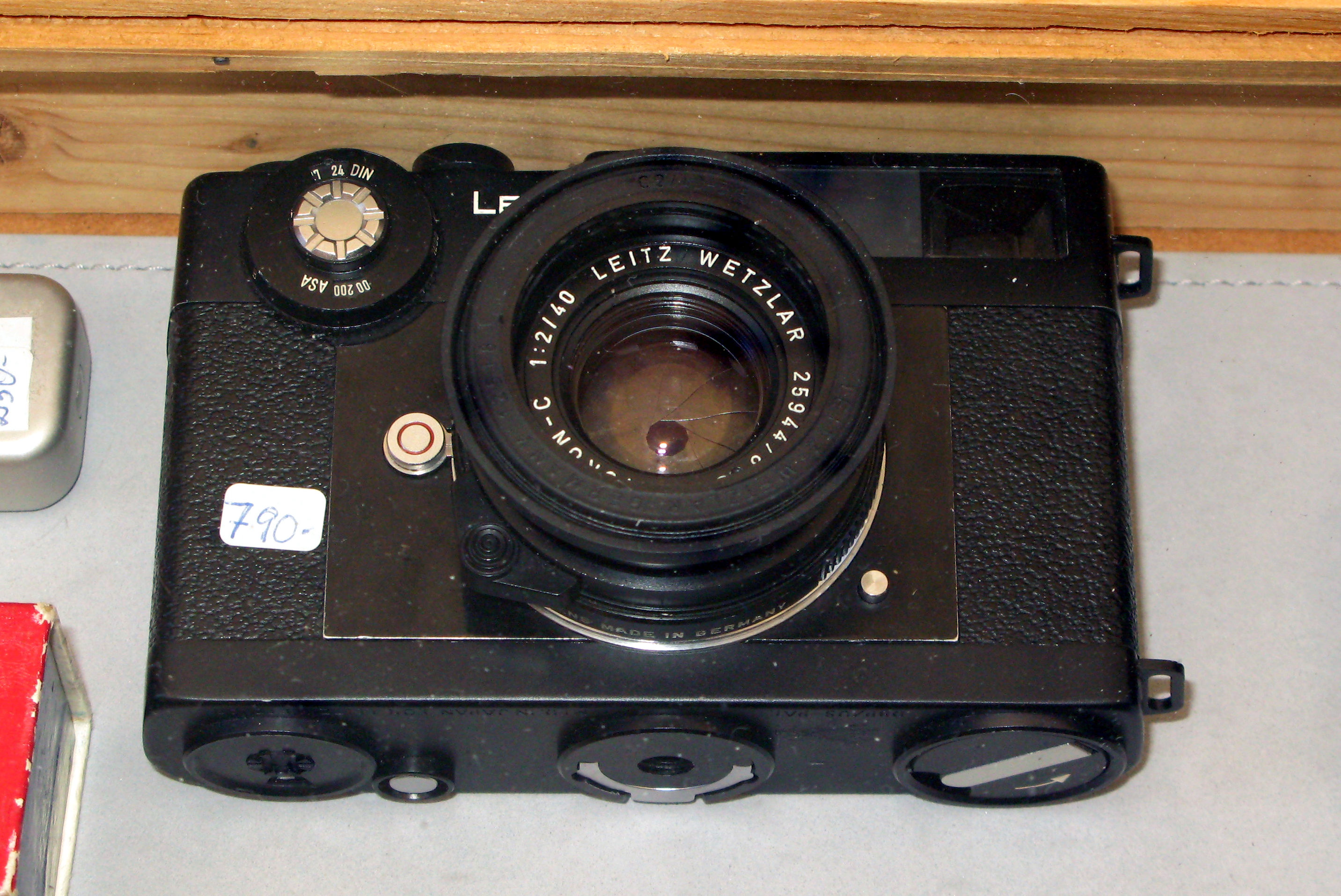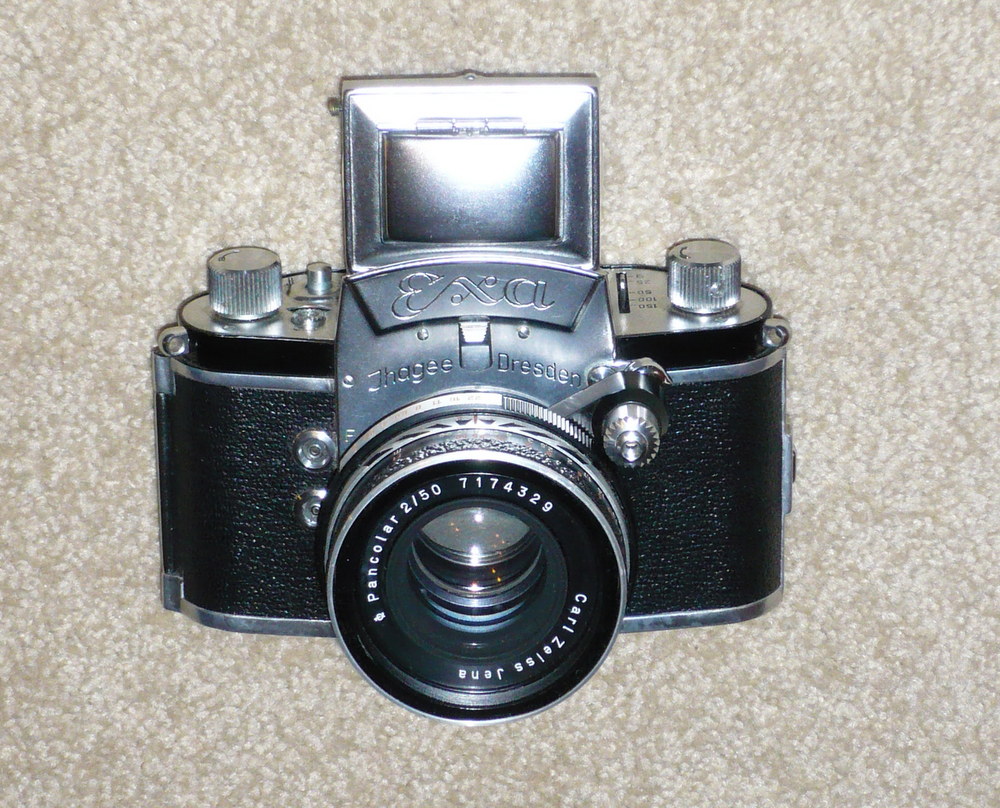|
Minolta
was a Japanese manufacturer of cameras, lenses, camera accessories, photocopiers, fax machines, and laser printers. Minolta Co., Ltd., which is also known simply as Minolta, was founded in Osaka, Japan, in 1928 as . It made the first integrated autofocus 35 mm SLR camera system. In 1931, the company adopted its final name, an acronym for "Mechanism, Instruments, Optics, and Lenses by Tashima". In 2003, Minolta merged with Konica to form Konica Minolta. On 19 January 2006, Konica Minolta announced that it was leaving the camera and photo business, and that it would sell a portion of its Single-lens reflex camera, SLR camera business to Sony as part of its move to pull completely out of the business of selling cameras and photographic film. History Milestones *1928: establishes Nichi-Doku Shashinki Shōten ("Japanese-German photo company," the precursor of Minolta Co., Ltd.). *1929: Marketed the company's first camera, the "Nifcarette" (ニフカレッテ). *1937: The Mi ... [...More Info...] [...Related Items...] OR: [Wikipedia] [Google] [Baidu] |
Konica Minolta
is a Japanese multinational corporation, multinational technology company headquartered in Marunouchi, Chiyoda, Tokyo, Chiyoda, Tokyo, with offices in 49 countries worldwide. The company manufactures business and industrial imaging products, including copiers, laser printers, multi-functional peripherals (MFPs) and digital print systems for the production printing market. Konica Minolta's Managed Print Service (MPS) is called Optimised Print Services. The company also makes optical devices, including lenses and LCD film; medical and graphic imaging products, such as X-ray image processing systems, colour proofing systems, and X-ray film; photometers, 3-D digitizers, and other sensing products; and textile printers. It once had camera and photo operations inherited from Konica and Minolta but they were sold in 2006 to Sony, with Sony's Sony α, Alpha series being the successor Single-lens reflex camera, SLR division brand. History Company history Konica Minolta was formed by a m ... [...More Info...] [...Related Items...] OR: [Wikipedia] [Google] [Baidu] |
Minolta SR-2
The Minolta SR-2 was presented in 1958 as the first 35mm SLR camera from Chiyoda Kogaku. Popular cameras of this type at that time were mainly from Europe but a few from Japan, including the Asahi Pentax, the Miranda T and the Topcon R. The miniature SLR camera concept was conceived in the 1930s at Ihagee in Dresden, resulting in the 1936 Kine Exakta. Influential cameras designs like that of the 1939 KW Praktiflex, the 1949 ZI Contax S, and 1952 the KW Praktina marked the steady progress toward a perfected SLR. Several features of the latter seem to have influenced the design of the SR-2 although dissimilar in many respects. The obvious similarities are the stepped top plate, the carrying strap lugs, the self-timer lever and some general body features. The name Minolta was first used in 1932 on the 4.5×6 format Semi-Minolta using 120 film. The manufacturer was established in November 1928 by (1899-1985) as the Nichidoku Shashinki Shōten (Japan-German Camera Store) tog ... [...More Info...] [...Related Items...] OR: [Wikipedia] [Google] [Baidu] |
Minolta 35
The Minolta-35 was launched in the spring of 1947 by Chiyoda Kogaku. It was the first successful new 35mm rangefinder camera with Leica specifications to emerge on the market after World War II that uses the 39mm screw lens-mount. The Minolta-35 range of cameras was manufactured in quantities during its twelve-year production period, totalling about 40,000 units. Only the 1933 FED and the 1940 Leotax cameras had appeared successfully before it, although several Leica copies had appeared in both Italy and Japan. Models There are eight successive models of the Minolta-35. 1 - Minolta-35 (Model A) On entering the miniature camera business, Chiyoda Kogaku had decided to make the frame size 24×32mm, a logical proposition at the time since most photo copies were made on paper closer to this format. The already established international standard was 36 images of 24×36mm. By doing so, a standard length of film yielded four more exposures on a 36-exposure load. The Minolta-35 has ... [...More Info...] [...Related Items...] OR: [Wikipedia] [Google] [Baidu] |
Leica CL
The Leica CL is a 135 film, 35mm compact rangefinder camera with interchangeable lenses in the Leica M-mount. It was developed in collaboration with Minolta who manufactured it. It first appeared in April 1973 and was released in the Japanese market in November 1973 as the Leitz Minolta CL. Both the Leica CL and Leitz Minolta CL were manufactured in a new Minolta factory in Osaka. In 2017, Leica announced a new digital mirrorless camera, again named Leica CL (2017), Leica CL. Description The Leica CL has a vertical-running focal plane shutter, with cloth curtains, giving ½ to 1/1000 speeds. There is a through-the-lens CdS exposure meter mounted on a pivoting arm just in front of the shutter, like the Leica M5. The exposure is manual and the shutter is mechanical. The shutter speeds are visible in the finder. The finder's framelines are for a 40mm, 50mm or 90mm lens. The 40mm and 50mm framelines are always present and the 90mm frame line is automatically selected upon mounting of ... [...More Info...] [...Related Items...] OR: [Wikipedia] [Google] [Baidu] |
Minolta Hi-Matic
Hi-Matic was the name of a long-running series of 35 mm cameras made by Minolta. The original Hi-Matic of 1962 was the first Minolta camera to feature automatic exposure and achieved a small degree of fame when a version (the Ansco Autoset) was taken into space by John Glenn in 1962. Models The first Hi-Matic, introduced in 1962, was offered with a 45 mm f/2 or 45 mm f/2.8 lens and featured a built-in selenium light meter and rangefinder. Both the aperture and shutter speed were set automatically. The Hi-Matic was also rebadged as the Ansco Autoset. The Hi-Matic 7 followed in 1963. It had a faster f/1.8 lens and used a CdS cell instead of a selenium meter. Additionally, it gave photographers the option of setting the exposure manually, an option not available in the original Hi-Matic. The Hi-Matic 7S and Hi-Matic 9, both released in 1966, were somewhat improved versions of the popular 7. Compared with the 7, the 7S had the Contrast Light Compensator (CLC) metering sys ... [...More Info...] [...Related Items...] OR: [Wikipedia] [Google] [Baidu] |
Minolta SR-T 101
The Minolta SR-T 101 is a 35mm manual focus SLR camera with Through-The-Lens exposure metering – TTL for short - that was launched in 1966 by Minolta Camera Co. It was aimed at demanding amateur and semi-professional photographers. The SR-T 101 stayed in production for ten years with only minor changes. Description The design is based on the Minolta SR-7 model V camera of 1962, but the principal design is inherited from the original 1958 Minolta SR-2 The Minolta SR-2 was presented in 1958 as the first 35mm SLR camera from Chiyoda Kogaku. Popular cameras of this type at that time were mainly from Europe but a few from Japan, including the Asahi Pentax, the Miranda T and the Topcon R. The .... The SR-T 101 however, has several significant features apart from the TTL meter. The most significant one is perhaps the full aperture metering facility, allowing the exposure to be set accurately without stopping down. Full aperture TTL metering was commercially first realise ... [...More Info...] [...Related Items...] OR: [Wikipedia] [Google] [Baidu] |
Konica
was a Japanese manufacturer of, among other products, film, film cameras, camera accessories, photographic and photo-processing equipment, photocopiers, fax machines and laser printers, founded in 1873. The company merged with Japanese peer Minolta in 2003, forming Konica Minolta. History The company traces its history back to 1873 when pharmacist Rokusaburo Sugiura began selling photographic materials at his shop in Konishiya Rokubē, the biggest pharmacy trader in Tokyo at that time. In 1878, Rokusaburō succeeded to his family and renamed Rokuemon VI (Rokudaime Rokuemon). He gave the original shop to his younger brother and launched a new shop, Konishi Honten (Konishi Main Shop) in the Nihonbashi district of Tokyo. In 1882, Konishi launched a project to produce photography related materials in Japan which were imported at that time. In 1902, Konishi began to sell the "Cherry Portable Camera" (チェリー手提用暗函), the first Japanese produced end-user oriented camer ... [...More Info...] [...Related Items...] OR: [Wikipedia] [Google] [Baidu] |
Leica R3
The Leica R3 was a 35mm SLR camera by Leica and the first model of their R series. Leica launched the Leica R3 in 1976. It was the successor of the Leicaflex SL2, and was developed in cooperation with Minolta was a Japanese manufacturer of cameras, lenses, camera accessories, photocopiers, fax machines, and laser printers. Minolta Co., Ltd., which is also known simply as Minolta, was founded in Osaka, Japan, in 1928 as . It made the first integrated ..., together with the Minolta XE bodies.photoscala.de, July 2018, »R« – in the Shadow of the »M«, retrieved at 1 November 2020 (German). It was a 35mm SLR with a Copal ... [...More Info...] [...Related Items...] OR: [Wikipedia] [Google] [Baidu] |
Light Meter
A light meter (or illuminometer) is a device used to measure the amount of light. In photography, an exposure meter is a light meter coupled to either a Digital data, digital or analog calculator which displays the correct shutter speed and f-number for optimum exposure (photography), exposure, given a certain lighting situation and film speed. Similarly, exposure meters are also used in the fields of cinematography and scenic design, in order to determine the optimum light level for a scene. Light meters also are used in the general field of architectural lighting design to verify proper installation and performance of a building lighting system, and in assessing the light levels for growing plants. If a light meter is giving its indications in luxes, it is called a "luxmeter". Evolution File:Watkins Bee Meter.jpg, Watkins Bee Meter - a type of actinometer File:Leudi extinction meter.jpg, Leudi extinction meter File:METROPHOT.jpg, Metrophot Norwood Director IMG2024062813453 ... [...More Info...] [...Related Items...] OR: [Wikipedia] [Google] [Baidu] |
Single-lens Reflex Camera
In photography, a single-lens reflex camera (SLR) is a type of camera that uses a mirror and prism system to allow photographers to view through the lens and see exactly what will be captured. SLRs became the dominant design for professional and consumer-level cameras throughout the late 20th century, offering interchangeable lenses, through-the-lens (TTL) metering, and precise framing. Originating in the 1930s and popularized in the 1960s and 70s, SLR technology played a crucial role in the evolution of modern photography. Although digital single-lens reflex (DSLR) cameras succeeded film-based models, the rise of Mirrorless camera, mirrorless cameras in the 2010s has led to a decline in SLR use and production. With twin lens reflex and rangefinder cameras, the viewed image could be significantly different from the final image. When the shutter button is pressed on most SLRs, the mirror flips out of the light path and allows light to pass through to the light receptor and the im ... [...More Info...] [...Related Items...] OR: [Wikipedia] [Google] [Baidu] |
Friendship 7
Mercury-Atlas 6 (MA-6) was the first crewed American orbital spaceflight, which took place on February 20, 1962. Piloted by astronaut John Glenn and operated by NASA as part of Project Mercury, it was the fifth human spaceflight, preceded by Soviet orbital flights Vostok 1 and 2 and American sub-orbital flights Mercury-Redstone 3 and 4. The Mercury spacecraft, named ''Friendship 7'', was carried to orbit by an Atlas LV-3B launch vehicle lifting off from Launch Complex 14 at Cape Canaveral, Florida. After three orbits, the spacecraft re-entered the Earth's atmosphere, splashed down in the North Atlantic Ocean, and was safely taken aboard . The total mission flight time was 4 hours 55 minutes and 23 seconds. Preparation After the successful completion of the Mercury-Atlas 5 flight that carried Enos, a chimpanzee, in late November 1961, a press conference was held in early December. Reporters asked NASA's Robert Gilruth who would be the first U.S. astronaut in orbit, pilo ... [...More Info...] [...Related Items...] OR: [Wikipedia] [Google] [Baidu] |






